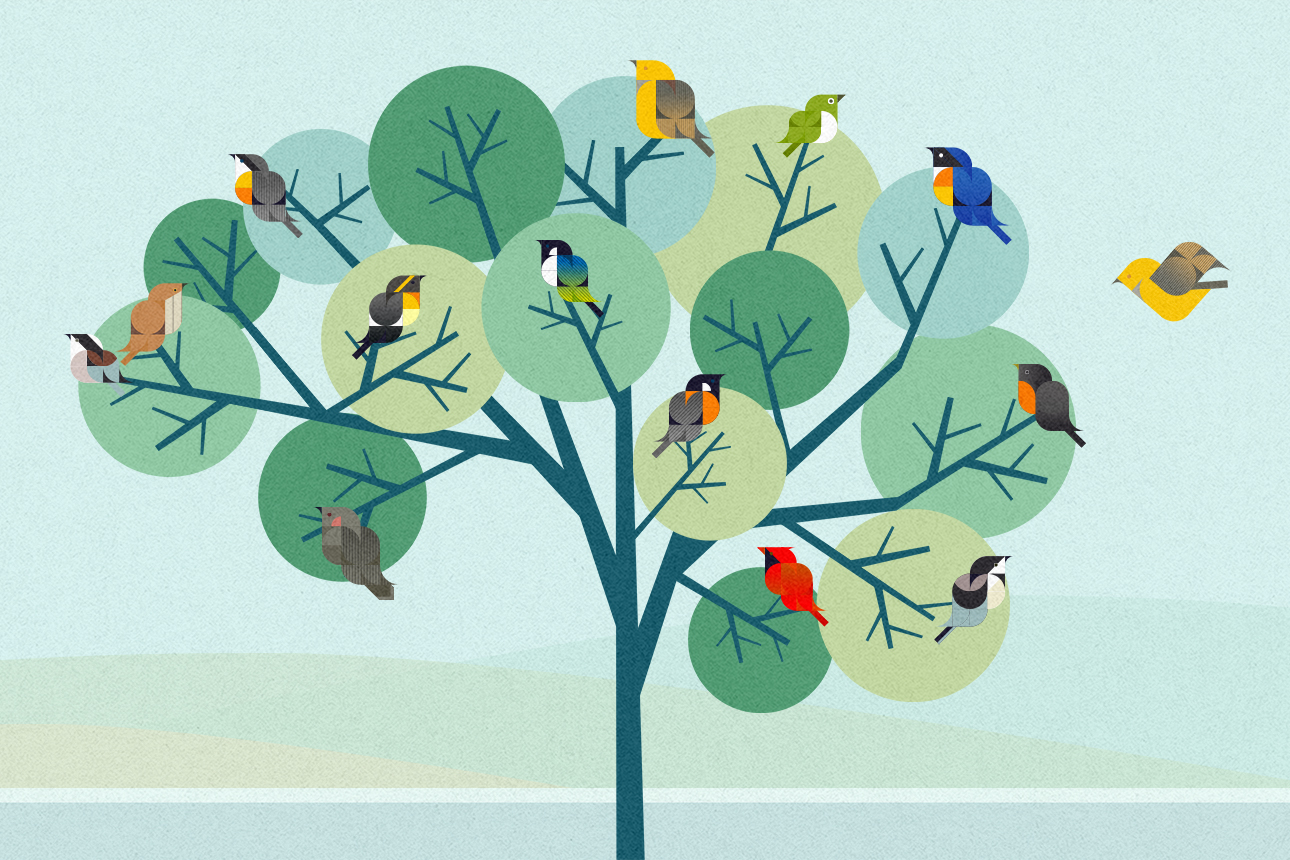Diverse Teams Thrive With Four Elements of Belonging
Learn how to better support neurodiversity, as explained in this excerpt from the forthcoming book The Canary Code.

Carolyn Geason-Beissel/MIT SMR | Getty Images
Jessica is an ace data analyst; her mind excels at seeing connections that others miss. For many years, she delivered outstanding work and supported her company with system improvement suggestions. And then her work life crumbled — along with the walls of her cubicle, which the company decided to take down.
“It will be wonderful,” her boss insisted. “It will be light and bright and open and collaborative.”
No. Not wonderful, not for Jessica.
For one thing, Jessica has congenital cataracts. Fighting and avoiding glare has been a lifelong exercise, and although “light and bright” might be desirable for others, it is detrimental to her health.
Get Updates on Transformative Leadership
Evidence-based resources that can help you lead your team more effectively, delivered to your inbox monthly.
Please enter a valid email address
Thank you for signing up
But her vision difficulties are just a part of the problem. She is sensitive to many aspects of her environment. The sensation of the forced air from the industrial office vents is both unpleasant and distracting. The walls of the cubicle protected her from the worst of it. In the open office, that protection would be lost.
And then there was the horror of having her back exposed. Jessica had always been “jumpy,” easily startled. Arranging her desk in her cubicle to face the entrance helped her feel safe. With the sense of physical safety gone, how would her glorious, data-attuned brain produce the exceptional work it had delivered for so many years?
Managers brushed off Jessica’s concerns with comments like “Oh, you will come to like it.” She did not. Her well-being and productivity suffered in an open office. She suffered in the open office, physically and emotionally, needing to hide just to breathe. Still, managers denied her requests to work from home as much as some of her colleagues could.
After emotionally struggling for a while and ready to quit, Jessica broke down in her therapist’s office. Fortunately, the therapist connected the dots. She left the office with a diagnosis of autism and an accommodations letter.
Soon after, the COVID-19 pandemic exposed just how outdated in-office work had become. Jessica — mind and body — could now deliver her outstanding work from home. She also discovered her autistic pride and a passion for neuroinclusion, becoming a founding member of the neurodiversity-focused Umbrella Alliance and an advocate for others.
Jessica’s employer at that time welcomed some of the aspects of her autistic mind — or rather the results it produced.
References
1. H. Markram, T. Rinaldi, and K. Markram, “The Intense World Syndrome — an Alternative Hypothesis for Autism,” Frontiers in Neuroscience 1, no. 1 (November 2007): 77-96; and C. Meng, C. Huo, H. Ge, et al., “Processing of Expressions by Individuals With Autistic Traits: Empathy Deficit or Sensory Hyper-Reactivity?” PLOS One 16, no. 7 (July 9, 2021): 1-17.
2. Y. Xie, X. Gao, Y. Song, et al., “Effectiveness of Physical Activity Intervention on ADHD Symptoms: A Systematic Review and Meta-Analysis,” Frontiers in Psychiatry 12 (Oct. 25, 2021): 1-12; and J. Edry, “Moving Forward: Reflections on Autism, Neurodiversity, Brain Surgery, and Faith” (self-pub., Jacki Edry, 2021).
3. M. Zhang, Y. Zhang, and Y. Kong, “Interaction Between Social Pain and Physical Pain,” Brain Science Advances 5, no. 4 (December 2019): 265-273.
4. C.L.A. Zurbriggen, M. Venetz, S. Schwab, et al., “A Psychometric Analysis of the Student Version of the Perceptions of Inclusion Questionnaire (PIQ),” European Journal of Psychological Assessment 35, no. 5 (September 2019): 641-649.
5. D. Miller, J. Rees, and A. Pearson, “‘Masking Is Life’: Experiences of Masking in Autistic and Nonautistic Adults,” Autism in Adulthood 3, no. 4 (December 2021): 330-338.
6. J. Decety and K.J. Yoder, “Empathy and Motivation for Justice: Cognitive Empathy and Concern, but Not Emotional Empathy, Predict Sensitivity to Injustice for Others,” Social Neuroscience 11, no. 1 (2016): 1-14; and D. De Cremer and K. van den Bos, “Justice and Feelings: Toward a New Era in Justice Research,” Social Justice Research 20, no. 1 (March 2007): 1-9.
7. R.P. Vecchio, “Negative Emotion in the Workplace: Employee Jealousy and Envy,” International Journal of Stress Management 7, no. 3 (July 2000): 161-179.
